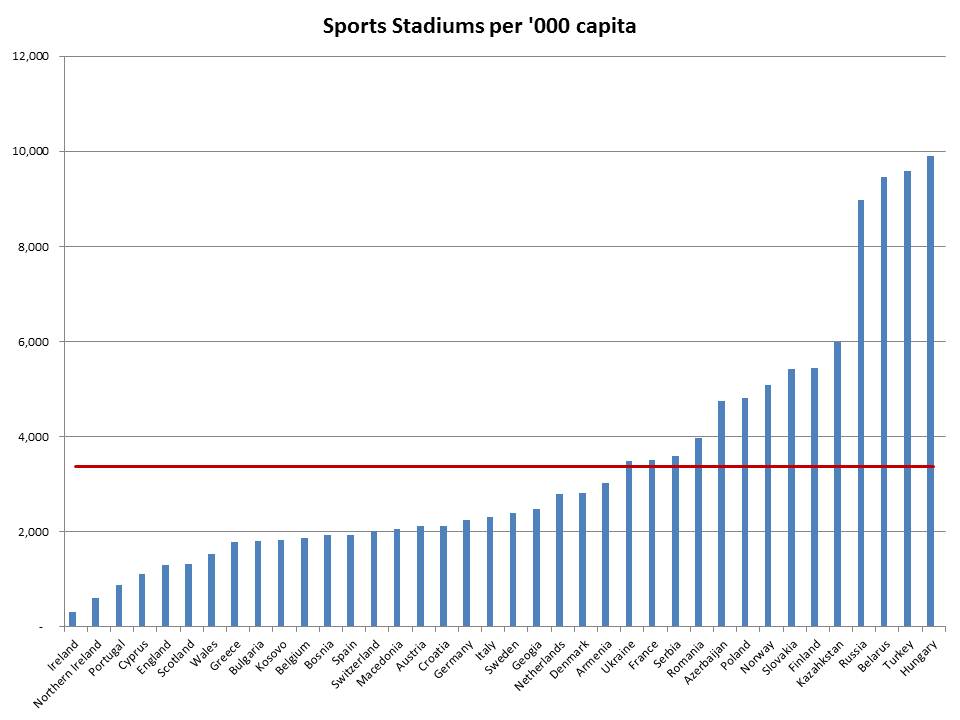The data lists all completed stadiums in Europe with a capacity of at least 25,000. It includes all-seater and mixed seated and terrace grounds. There are 293 stadiums listed across 38 countries.
Ireland is leading the way quite dramatically in the number of stadiums for its size. There is a 25,000-capacity stadium for every 311,000 people in the Republic of Ireland. This compares to one for every 1.3m people n England, 1.3m people in Scotland, 1.9m people in Spain, 2.2m people in Germany, 2.3m people in Italy, and 3.5m people in France. Even compared to other small countries, Ireland is exceptional.
It is also notable that the second lowest ratio is in Northern Ireland which has 3 stadiums with more than 25,000 capacity which means there is one for every 604,000 people. One of those grounds (The Oval in Belfast) technically has a capacity in excess of 25,000 but for health reasons this is currently capped at just under 6,000.
What is striking about the Irish experience (North and South) is that the stadiums are predominantly not used for football. Football stadiums dominate in Europe. For example, in England 6 of the 41 stadiums are not football grounds - though that includes the Olympic Stadum in London which will shortly become the home ground of West Ham. A similar proportion of the grounds in Spain, Germany and France are also football stadiums. In Ireland none of the stadiums (with the exception of the previously mentioned Oval) are used predominantly for football. The Aviva Stadium in Dublin hosts international football matches and Thomond Park is currently used by local League of Ireland team, Limerick FC, until a new (small) ground is completed. The remaining grounds are owned by the GAA, the sporting body for hurling and gaelic football. This is an amateur sporting body in that the players are not paid, but in administration the sports are far from amateur.
Currently, Pairc Ui Chaoimh in Cork is being redeveloped at a cost of €70m (of which €30 is due to come from the state). It is very questionable whether such an investment is a good use of public funds. Particularly where these stadiums are rarely at capacity. It seems each county's desire to out-do rivals is the primary source of this pork spending.
Also, the achievement of the GAA demonstrates what can be done when players don't need to be compensated. There is a famous quote attributed to Alan Sugar, then chairman of Spurs and satellite dish manufacturer Amstrad, when the first Sky television deal was agreed. He is reported to have said that it didn't matter how much the clubs received from the deals with the broadcaster because it would all be pissed away on players wages. The GAA don't have that problem.

 RSS Feed
RSS Feed